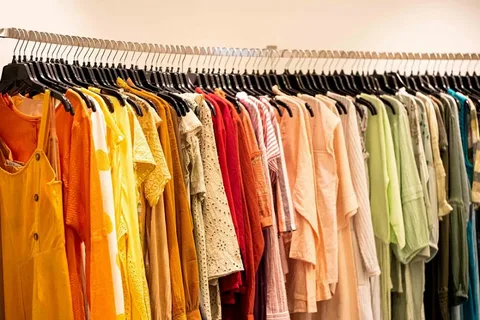The world of clothing manufacturing has drastically evolved over the past few decades. Once dominated by manual labor and traditional processes, modern clothing manufacturers are now embracing a range of technological advancements, evolving trends, and a focus on sustainability. The convergence of these factors is transforming how clothing is designed, produced, and consumed. In this article, we explore what’s inside the world of a modern clothing manufacturer, highlighting the key aspects of technology, trends, and sustainability that are shaping the industry today.
The Rise of Technology in Clothing Manufacturing
Automation and Robotics
One of the most significant advancements in modern clothing manufacturing is the integration of automation and robotics. Automated cutting machines, sewing robots, and smart production lines have revolutionized the way garments are produced. These machines can work faster and with greater precision than human labor, significantly improving productivity and reducing production costs.
Robotic sewing machines are now capable of executing complex stitching patterns with incredible accuracy, while automated fabric cutting machines ensure minimal waste. These technological innovations help manufacturers meet the growing demand for high-quality, well-made garments in a time-efficient manner.
Artificial Intelligence (AI) and Machine Learning
Artificial intelligence (AI) is another key driver of change within the clothing manufacturing industry. Machine learning algorithms are now being used for everything from predicting fashion trends to optimizing supply chains. AI tools can analyze vast amounts of data to forecast consumer preferences, allowing manufacturers to adjust their production processes to align with market demand more effectively.
Moreover, AI can help in quality control by identifying defects in fabrics or finished products during the production process. This leads to a reduction in the number of returns and a higher standard of quality for consumers.
Current Trends Shaping the Clothing Manufacturing Industry
Fast Fashion vs. Slow Fashion
The fast fashion industry has dominated global markets for years, prioritizing speed and cost-efficiency. However, there is a growing shift towards “slow fashion,” where manufacturers focus on creating high-quality, durable clothing with sustainable practices. This trend reflects a wider societal movement toward conscious consumption, where consumers are becoming more aware of the environmental impact of their clothing choices.
Many modern clothing manufacturers are now balancing the need for efficiency with a commitment to sustainability. As part of this shift, brands are embracing new business models that focus on quality over quantity, ensuring that garments are produced to last and not just to be discarded after a season.
Customization and Personalization
Today’s consumers want more than just off-the-rack clothing—they want pieces that reflect their personal style. The demand for customization has led to a surge in technologies that allow for personalized clothing production. From 3D knitting machines to digital fabric printing, manufacturers can now produce garments tailored to individual measurements, designs, and preferences.
By leveraging these technologies, modern clothing manufacturers can create unique products on demand, reducing waste and ensuring that consumers get exactly what they want.
Sustainability: The Future of Clothing Manufacturing
Eco-Friendly Materials
Sustainability has become a cornerstone of modern clothing manufacturing. Eco-conscious consumers are increasingly seeking garments made from sustainable materials like organic cotton, hemp, and recycled fabrics. In response, manufacturers are sourcing and developing new textiles that have a lower environmental impact.
Recycled polyester, made from post-consumer plastic bottles, is one such innovation. Not only does it reduce plastic waste, but it also uses less energy in the production process compared to virgin polyester. Other materials like bamboo and Tencel are also gaining popularity for their sustainability credentials.
Reducing Waste through Circular Fashion
Circular fashion, which focuses on reducing waste by keeping garments in use for as long as possible, is a growing trend. Modern clothing manufacturers are adopting closed-loop systems where products are designed for durability and recyclability. This allows garments to be repaired, resold, or recycled, rather than ending up in landfills.
Brands are now using take-back programs, where consumers can return their old clothing for recycling or reuse, contributing to the creation of a circular economy. This approach not only reduces waste but also helps reduce the demand for virgin materials, lessening the environmental footprint of the clothing industry.
Conclusion: Embracing the Future of Clothing Manufacturing
Inside the world of a modern clothing manufacturer, technology, trends, and sustainability are at the forefront of the industry’s evolution. As automation, AI, and sustainable practices continue to reshape the production process, manufacturers are able to meet consumer demands for faster, more personalized, and environmentally-friendly clothing. The industry’s shift toward slow fashion, combined with innovative technologies and eco-friendly materials, marks a significant step toward a more sustainable and ethical future for fashion.
By embracing these advancements, modern clothing manufacturers are not only improving their operations but also contributing to a more responsible and conscious fashion ecosystem. The journey toward a more sustainable and innovative clothing industry has just begun, and it’s one that promises to shape the future of fashion for generations to come.


